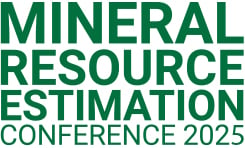Conference program
Conference program
Discover the full conference program below
The Mineral Resource Estimation 2025 conference program showcased global excellence by presenting leading best practice, case studies and research on mineral resource estimation and the software applications required.
Topics covered
- Data Science, Input Data, Machine Learning and AI
- Domaining and Geological Modelling
- Estimation
- Classification, RPEEE and Reporting
- Quantifying, Integrating and Modelling
- Culture, Failures/Learnings, Case Studies
